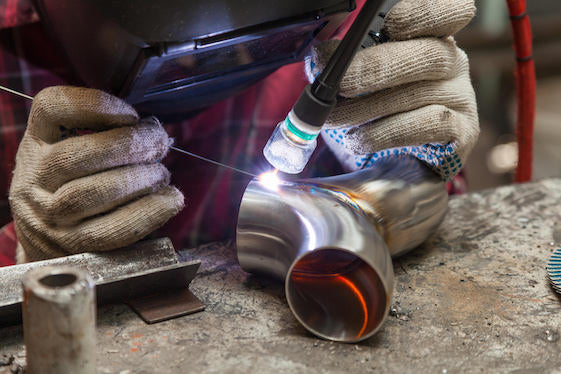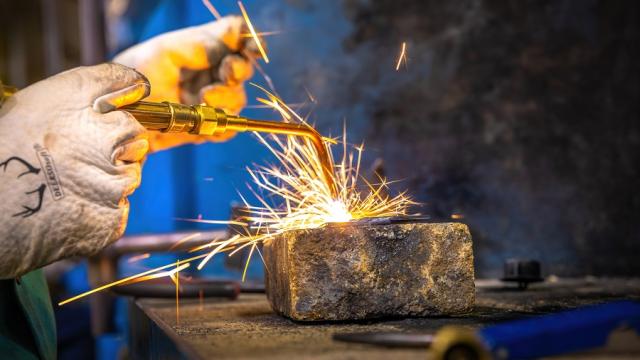Usual Welding Fixing Issues and Exactly How to Address Them Properly
Welding repairs commonly run into a variety of concerns that can endanger the stability of the last product. Common problems consist of inadequate infiltration, porosity, and misalignment, amongst others. Each issue offers special obstacles that call for details methods for resolution. Comprehending these issues is necessary for welders intending to enhance their outcomes and abilities. This discussion will discover these usual welding repair issues and reliable techniques to address them.
Poor Infiltration
Insufficient infiltration happens when the weld metal falls short to completely fuse with the base product, leading to weak joints and possible architectural failures. This issue typically stems from not enough warmth input, inaccurate electrode angle, or improper welding rate. Welders may experience inadequate penetration as a result of a miscalculation of the required parameters for a details product thickness or type. Additionally, contamination on the base product's surface can hinder reliable bonding, exacerbating the issue. To address inadequate infiltration, welders ought to guarantee appropriate settings on their tools and keep a clean work surface. Routine evaluation of welds is suggested to identify any type of shortages early, enabling prompt modifications and the avoidance of endangered structural integrity in bonded assemblies.
Porosity
Porosity is an usual problem in bonded joints that shows up as small gas bubbles caught within the weld steel. This flaw can jeopardize the integrity of the weld, causing minimized toughness and prospective failing under anxiety. Montana Mobile Welding and Repair Welding. Porosity commonly arises from contamination, moisture, or improper welding techniques, which allow gases to escape into the molten weld pool. To attend to porosity, welders need to guarantee proper surface preparation, maintain a clean working setting, and make use of ideal welding parameters. Additionally, selecting the best filler material and protecting gas can mitigate gas entrapment. Normal evaluation and testing of welds can aid recognize porosity early, assuring prompt restorative actions are taken, thereby preserving the top quality and integrity of the bonded framework
Imbalance
Misalignment in welding can emerge from numerous variables, including improper configuration and thermal growth. Comprehending the origin is essential for reliable resolution. Numerous modification techniques are available to straighten parts and assure structural honesty.
Reasons for Misalignment
Welding imbalance commonly stems from a range of underlying issues that can jeopardize structural stability. One primary reason is incorrect fit-up of parts prior to welding, which can bring about spaces and uneven surface areas. Variations in thermal growth during the welding process can additionally lead to distortion, especially if the products being joined have various coefficients of growth. Additionally, poor fixturing and clamping may stop working to hold components firmly in position, leading to motion throughout welding. Improperly maintained tools, consisting of welding machines and devices, might introduce inconsistencies in the weld grain, more adding to misalignment. Driver mistake, stemming from not enough training or experience, can likewise play a substantial role in developing misaligned welds.

Adjustment Techniques Available
Dealing with misalignment successfully requires a combination of corrective methods customized to the details problems available. One usual approach is making use of jigs or components to hold components in the right setting during welding, ensuring consistent placement. Furthermore, pre-heating the products can help reduce distortion and boost fit-up. For substantial misalignment, mechanical adjustment techniques, such as using hydraulic jacks or clamps, can be employed to remedy the position prior to welding. Post-weld heat therapy may additionally be necessary to alleviate stresses triggered by imbalance. Lastly, cautious evaluation and change throughout the configuration phase can prevent imbalance issues from becoming substantial problems, promoting a smoother welding process and boosting total structural honesty.
Distortion
Distortion is a typical challenge in welding that can occur from various variables, consisting of uneven heating & cooling. Understanding the root causes of distortion is crucial for applying reliable avoidance strategies. Resolving this concern not only improves structural honesty yet also boosts the total high quality of the weld.
Reasons of Distortion
When subjected to the intense warmth of welding, materials commonly go through adjustments that can bring about distortion. This sensation mostly develops from thermal development and tightening during the welding procedure. As the weld location warms up, the product increases; upon cooling, it gets, which can develop interior stresses. On top of that, irregular heating across a work surface can exacerbate these stresses, causing warping or flexing. The kind of product likewise plays a significant function; metals with differing thermal conductivity and coefficients of expansion might react in a different way, causing unpredictable distortions. Poor joint layout and insufficient fixturing can add to misalignment throughout welding, boosting the possibility of distortion. Recognizing these causes is vital for effective welding fixing and prevention strategies.
Avoidance Techniques
Effective avoidance techniques for distortion throughout welding emphasis on managing warmth input and making sure proper joint style. Maintaining a constant warmth input assists to minimize thermal growth and tightening, which can lead to distortion. Using strategies such as pre-heating the work surface can likewise minimize the temperature level gradient, advertising consistent heating. In addition, choosing ideal joint styles, such as T-joints or lap joints, can boost stability and decrease tension focus. Applying correct fixturing to protect the work surfaces in place additionally help in maintaining positioning throughout the welding procedure. Finally, staggered welding sequences can disperse warmth extra evenly, avoiding localized distortion. By using these strategies, welders can considerably decrease the likelihood of distortion and improve the overall high quality of their welds.
Fracturing
Fracturing is a typical problem encountered in welding repairs, typically arising from different aspects such as inappropriate air conditioning prices, product choice, or insufficient joint prep work. The incident of fractures can greatly endanger the stability of the weld, bring about possible failures during procedure. To resolve this concern, welders have to initially examine the source, guaranteeing that materials work and suitably picked for the specific application. Furthermore, controlling the cooling price throughout the welding procedure is important; rapid air conditioning can cause anxiety and result in breaking. Correct joint layout and preparation also add to reducing the risk. Carrying out these techniques can enhance weld top quality and durability, inevitably minimizing the possibility of cracking in completed weldments.

Insufficient Fusion
A considerable concern in welding repairs is incomplete combination, which takes place when the weld steel does not adequately bond with the base product or previous weld passes - Belgrade Fabrication. This problem can bring about weaknesses in the joint, potentially compromising the stability of the welded structure. Elements adding to insufficient combination include inadequate warm input, incorrect welding strategy, and contamination of the surface areas being signed up with. To resolve this concern effectively, welders ought to ensure appropriate pre-weld cleaning and surface area preparation, in addition to adjust their welding parameters to achieve adequate infiltration and fusion. Regular examination throughout the welding process can also help identify insufficient blend early, permitting prompt rehabilitative actions to enhance the overall quality of the weld
Overheating
While welding repair work can enhance structural stability, overheating presents a significant obstacle that can bring about product deterioration. Extreme warm during welding can modify the mechanical buildings of metals, resulting in decreased strength, raised brittleness, and bending. This phenomenon is particularly crucial in high-stress applications where structural reliability is extremely important. Recognizing overheating can involve aesthetic assessments for discoloration or distortion, along with keeping track of temperature level during the welding procedure. To alleviate the risks associated helpful site with getting too hot, welders ought to employ ideal methods, such as managing warmth input, changing traveling speed, and making use of appropriate filler products. Furthermore, implementing pre- and post-weld warm therapies can help recover material homes and boost the overall top quality of the repair work, ensuring lasting performance and security.
Often Asked Inquiries
What Are the Usual Indicators of a Welding Flaw?

How Can I Check My Welds for High quality?
To test welds for quality, one can make use of aesthetic evaluations, ultrasonic testing, and radiographic methods. Each strategy assures architectural stability, determines flaws, YOURURL.com and confirms adherence to defined criteria, eventually enhancing the reliability of the bonded joints.
What Security Safety Measures Should I Take While Welding?
When welding, one need to focus on safety by putting on proper personal safety tools, making certain appropriate air flow, safeguarding flammable products away, preserving a clean office, and understanding surroundings to stop crashes and injuries.
Can I Repair a Weld Without Redoing the Entire Joint?
Repairing a weld without renovating the entire joint is possible, depending on the damage (Montana Mobile Welding and Repair Belgrade). Strategies such as grinding, adding filler product, or utilizing a welding procedure can efficiently address specific problems while preserving the bordering framework
What Tools Are Crucial for Efficient Welding Services?
Vital devices for reliable welding repair services include a welding machine, cord brush, grinder, protective equipment, clamps, and filler products. Each tool plays a crucial duty in making sure top quality and safety throughout the fixing process. Porosity normally arises from contamination, moisture, or incorrect welding strategies, which allow gases to leave right into the liquified weld swimming pool. Improperly maintained devices, consisting of welding makers and devices, might introduce disparities in the weld grain, further contributing to misalignment. When subjected to the intense heat of welding, materials usually undergo changes that can lead to distortion. Splitting is an usual concern run into in welding fixings, frequently resulting from various elements such as incorrect air conditioning prices, material choice, or insufficient joint preparation. A significant Home Page issue in welding repairs is incomplete fusion, which happens when the weld steel does not properly bond with the base material or previous weld passes.
Comments on “A detailed look at welding penetration issues and Montana Mobile Welding and Repair Belgrade’s fixes”